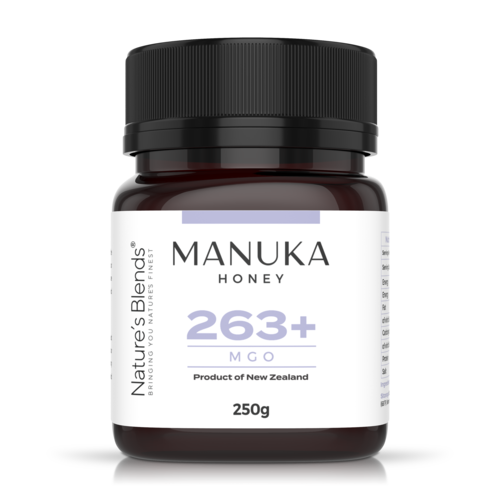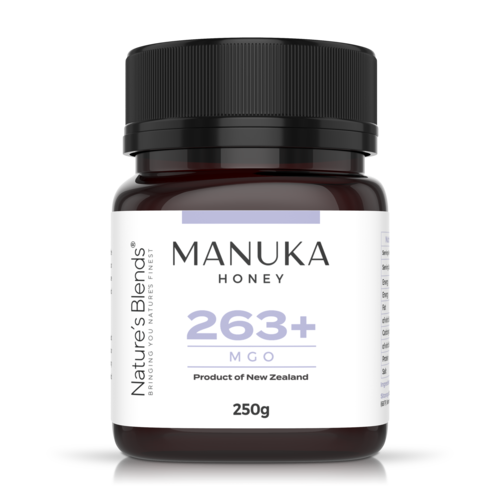Nature's Blend SA
Manuka Honey 263+
Manuka Honey 263+
Couldn't load pickup availability
Nature’s Blends Manuka Honey 83+
Premium Quality, Raw and Unpasteurized
Our Manuka Honey 83+ is sourced directly from the pristine regions of New Zealand, where Manuka flowers bloom for a brief period in spring and summer. This raw, unpasteurized honey is harvested using cold methods to preserve its natural taste and consistency. We rigorously test our honey to ensure its purity and quality.
Taste, Color, Aroma, and Texture
Manuka Honey 83+ offers a distinctive taste with mild to medium sweetness, complemented by a subtle hint of caramel and a clean, slightly bitter aftertaste. The raw, unfiltered honey has a thick, creamy texture and smooth consistency that melts effortlessly in your mouth. Its color can range from dark cream to brown, depending on the season.
How to Enjoy Manuka Honey
Manuka Honey 83+ is versatile and can be enjoyed in various ways. Use it as a natural sweetener in tea, oatmeal, or smoothies, or drizzle it over yogurt or pancakes. You can also substitute it for sugar in your recipes or use it as a topping for baked goods and roasted vegetables.
Product Details
-
MGO Value: 83+
-
Taste: Mild to medium sweetness with caramel notes
-
Color: Dark cream to brown
-
Texture: Thick, creamy
Manuka Honey is produced by bees that feed on the nectar of the Manuka tree (Leptospermum scoparium), which is found only in New Zealand and certain parts of Australia. The unique nectar of the Manuka tree contributes to the honey’s distinct flavor and properties.
This honey is a rare and highly sought-after product, harvested during the short summer season when the Manuka flowers are in bloom. Its distinct taste and smooth texture make it one of the finest types of honey in the world.
Share


